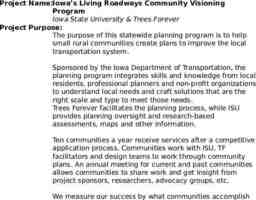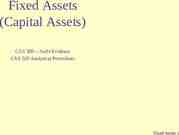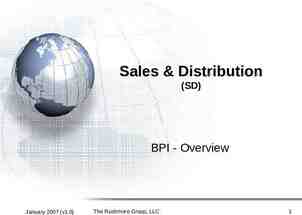Developing an Investigation Plan African Dialogue Conference
14 Slides341.01 KB
Developing an Investigation Plan African Dialogue Conference on Consumer Protection 8th-10th September 2014 Crossroads Hotel - Lilongwe, Malawi. Augustine Nyirenda, Senior Economist CFTC - Malawi
Outline of the Presentation Introduction What is an investigation plan? Why is it useful? Consumer case investigation in Malawi Components of the Investigation Plan Summary of a Complaint Legal Theories Investigation Strategy and Sources of Evidence Required Personnel and Resources Milestones and Timelines
Introduction The investigation plan is usually the first key document prepared in a case It sets out key aspects of the investigation and how it will be carried out as planned at this early stage Investigation Plan Helps the Investigator: Stay focused on the issues Identify all reasonably viable investigative avenues Use resources effectively Anticipate problems before they arise Set strict milestones and timelines
Consumer Case Investigation in Malawi CFTC conducts investigations either: after receiving a complaint; or On its own volition (own initiative) This is in accordance with Section 8 of the CFTA Consumer complaints are investigated as long as: there was a transaction between a trader (supplier) and a consumer which is in violation of the law; there was some form of statement published, particularly in cases of misleading advertising; the complaint is covered by the Act (i.e. As a Consumer as stipulated in Section 2(1) of the CFTA)
Components of an Investigation Plan Summary of a Complaint Legal Theories Type of Conduct to be Investigated and the Legal Contraventions Theory (Theories) of Harm Elements of Proof Arguments and Defenses by Respondents Investigation Strategy and Sources of Evidence Required Personnel and Resources Milestones and Timelines
Summary of a Complaint Comprises of the allegations/issues to be investigated as submitted by the Complainant It should clearly state/outline Who the Complainant is? Who the Respondent is? What conduct by the Respondent is alleged to negatively impact the Complainant? When was the alleged conduct done? Any other “relevant” information
Legal Theories: Clearly point out the type of conduct being investigated Sale of expired goods Exclusion for defective goods False advertisement The alleged legal contraventions: which laws are being contravened by engaging in that conduct clearly point out the sections of the CFTA or the CPA that the Respondent is contravention by engaging in such conduct
Theory of Harm: Outlining how the alleged conduct will impact on consumer welfare, for example: Deprives consumers of truthful information to make informed choices. Deprives consumers of the benefits of price competition among traders Allows the traders supply low quality of goods Limits choice by consumers Allows the traders supply goods which do not meet consumer safety standards Unconscionable loss of revenue or other resources by the consumer
Elements of Proof: Outlining what critical facts you are going to base your analysis on to prove the case. For example: that there was a transaction between a trader (supplier) and a consumer which is in violation of the law; that there was some form of statement published, particularly in cases of misleading advertising; that the good or service had a defect or did not meet consumer safety standards; that the complaint is covered by the Act (i.e. as a Consumer as stipulated in Section 2(1) of the CFTA)
Arguments and Defenses: It is also important to figure out what facts the Respondents might use in defense of their actual or proposed business conduct. These may include: That the advertisement was just misunderstood or taken out of context; That the product has developed the defect while in the consumers hands That it is consumers gimmick to dishonestly reap off the trader/supplier That it increases the seller’s/supplier’s efficiency in production or distribution Anticipating these defenses and making a pre-investigation analysis can be helpful in conducting the investigation.
Investigation Strategy and Sources of Information How the investigation will be carried out Interviews with interested parties Document or data analysis Physical tests or inspections of goods or services Sources of Information Complainant Respondent Competitors and other market players Other stakeholders
Required Personnel and Resources Depending on the nature of investigation Plan how many investigators will be involved Assign responsibilities to each member of the investigation team Determine how much resources will be required Construct an estimated budget for each stage or activity in the investigation This is helpful in good coordination of the investigation and efficient use of resources
Milestones and Timeline Plan the Investigation in stages Each stage should have a milestone, for example: Interviews with the Complainant and Respondent conducted Product testing or plant inspection concluded Draft investigation report submitted Stakeholder views received and recorded Final investigation report compiled Each milestone should have a time specification as to when it should be completed
Thank You!



















